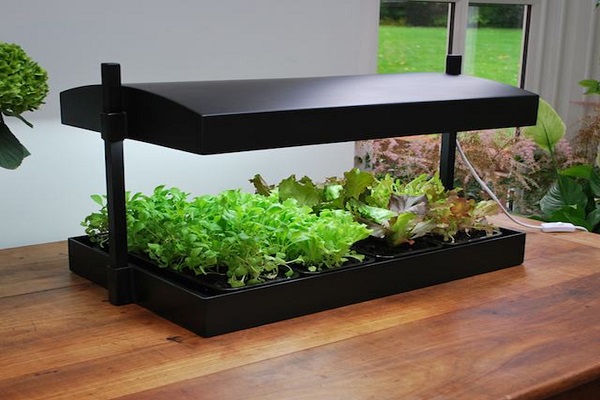Using grow lights outdoors has revolutionized the way we approach gardening and plant cultivation. Traditionally, plants rely on natural sunlight for photosynthesis and growth. However, advancements in lighting technology have paved the way for harnessing artificial light sources to supplement or even replace natural sunlight.
This innovation has opened up new possibilities for gardeners and plant enthusiasts, enabling them to cultivate plants in various outdoor environments regardless of the availability of direct sunlight. In this article, we will explore the concept of using grow lights outdoors, examining its benefits, challenges, and practical applications.
Quick Navigation
Can You Use Grow Lights For Outdoor Plants?

Yes, you can use Grow lights for outdoor plants. Grow lights will help to ensure that your plants get the light they need to grow, even if there is limited sunlight available. Keep an eye on the temperature and keep the Grow light close to the plants to avoid overheating.
How To Use Grow Lights For Outdoor Plants?

Grow lights are a great way to provide supplemental light for plants indoors, but they can also be used outdoors in areas with adequate sunlight. When using Grow lights outdoors, it is important to follow a few guidelines to ensure success.
- First, ensure that the Grow light is placed in a location that receives at least six hours of direct sunlight daily. If the light is not exposed enough, it will not produce healthy plants.
- Second, use proper intensity and placement when installing the light. Too much or too weak of light will not yield positive results.
- Finally, to keep your plants healthy and hydrated under Grow lights outdoors, make sure to water them regularly.
The Best Way To Use Grow Lights Outdoors Plants

Grow lights are a popular way to extend the Growing season for plants, and many different types and brands of Grow lights are available. Here are seven of the best ways to use Grow lights outdoors:
- As a supplemental light source. Grow lights can be used as supplemental lighting for plants in indoor gardens or greenhouses or as a primary light source for outdoor gardens. They come in all shapes and sizes, so find one that will fit your available space and is powerful enough to provide adequate light for your plants.
- To extend the Growing season. You can avoid problems like yellowing leaves or stunted Growth caused by cold temperatures if you use Grow lights to start your plants early in the winter in your area where the winters are long and cold. Using too much heat or too little heat can harm foliage, so be sure to keep an eye on your plants to ensure they don’t get too hot or too cold.
- To increase yields. Some vegetables, such as cucumbers and squash, produce larger fruit if Grown in areas with supplemental light during the early stages of Growth.
- To increase flower production. Growing flowers in a light environment often result in larger, more vibrant blooms.
- To prevent pests and diseases. Certain pests and diseases are particular favorites of light-sensitive plants, so providing supplemental light can help to minimize or eliminate damage caused by these organisms.
- To improve plant quality. Gardening with supplemental lighting can improve the quality of plants by increasing their resistance to disease and pests and the size of their fruits and flowers.
- To promote natural Growth patterns. Many plants prefer to grow in a relatively dark environment, which Growth lights can stimulate to supplement natural sunlight exposure.
The Benefits Of Using Grow Lights For Outdoors Plants
Grow lights are a popular method of lighting for plants. Outdoor Grow lights offer a wide range of advantages, including improved plant health, increased yields, and reduced maintenance requirements. The following are a few of the most frequently observed advantages:
Increased Production
Growing plants in artificial light can be limiting because the lamps control the light’s intensity and wavelength. This type of lighting is often not as efficient at providing nutrients to your plants, leading to decreased yields. Grow lights provide constant and consistent light, allowing your plants to grow more vigorously and produce more fruit or flowers.
Healthier Plants
Growing plants in artificial light may be subjected to harsh blue or white light that can damage their cells and cause them to become weaker or sickly. Grow lights emit various colors that help promote healthy growth and development in your plants without causing any harm.
Reduced Maintenance
Artificial lighting can be expensive to operate and maintain, especially if multiple lamps are set up inside or outside your home or greenhouse. With Grow lights, you only need one lamp per plant since they will provide all the needed light for your plants. This can save you time and money in the long run.
Faq About Using Grow Lights For Outdoors Plants
Can Grow Lights Substitute For Sunlight?
Yes, in some cases, Grow lights can substitute for sunlight. The intensity and spectrum of light provided by Grow lights can be manipulated to give plants the appropriate light for photosynthesis. However, there are some limitations to using Grow lights as a source of light for plants. Grow lights are often more expensive to operate than natural sunlight, and they also produce heat that can be harmful to plants.
Can A Grow Light Burn Plants?
It is possible for Grow lights to burn plants. This happens when the light is too intense or is on for too long. The plant tissue can be damaged or even killed by the heat from the light.
Are Grow Lights Waterproof?
This relies on the Grow light’s design and construction. Not all Grow lights are weatherproof. Before using a light, be sure it’s right for the job.
Can Plants Survive With Only Grow Lights?
Because photosynthesis and food production require sunlight, plants can’t do their jobs without it. While Grow lights can provide some supplemental light for plants, they do not replace natural sunlight. If plants are not able to get enough sunlight, they will not be able to survive.
How Many Hours A Day Should Grow Lights Be On?
Most plants need between 8 and 12 hours of light per day to Grow optimally. However, the specifics of how many hours a day your Grow lights should be on will vary depending on the plant you are Growing, the Growth stage, and your specific lighting setup. For most plants, you will want to start with 8 hours of light and then adjust up or down as needed.
How Much Faster Do Plants Grow With Grow Lights?
The use of Grow lights in plant cultivation can accelerate the Growth rate of plants by up to 50%. This is because the light emitted by the Grow lights is more intense than natural sunlight, providing the plants with more energy to Grow. Additionally, using Grow lights allows for cultivation in areas that do not receive much sunlight, such as during the winter months.
Conclusion
The use of grow lights outdoors has proven to be a game-changer in the realm of gardening and plant cultivation. It has brought about a paradigm shift, enabling gardeners to overcome the limitations imposed by natural sunlight and expand their gardening possibilities. By harnessing artificial lighting systems specifically designed for plant growth, individuals can now cultivate plants in diverse outdoor environments, irrespective of the amount or quality of available sunlight.

I’m Md. Mahfuz Anam always enjoys taking care of plants and gardening. I find it therapeutic and a great way to relax. I have also always been interested in learning about different types of plants and how to care for them.


